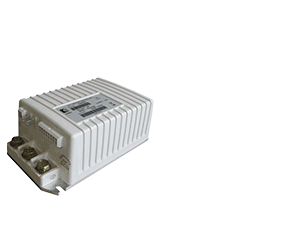The methods and tips for extending the life of golf car batteries are as varied as the communities that use these vehicles. Recreational and golf course communities often have a different maintenance regiment than retirement communities and the individual vehicle owner. In all cases, facts on how battery maintenance is performed can become exaggerated or misinterpreted over time. Despite what you may have heard, battery manufacturer’s maintenance recommendations are based on thousands of hours of constant testing and decades of data. From this, there are five basic tips that have proven to make golf car batteries perform better and last much longer than expected.
Step 1 – Measure The Battery’s State-Of-Charge
Ninety percent of the problems with golf cars that act sluggish, is because they are operating with an undercharged battery pack. You can easily check a battery’s state of charge with an inexpensive hydrometer. Comparing specific gravity readings to the specifications found on the battery manufacturer’s website, can help you determine if the battery is at full or part charge, and diagnose other potential problems.
Step 2 – Water Your Batteries After Charging
Although this seems like a simple task, many golf car batteries go un-attended for long periods of time. After charging, the electrolyte in the battery cells may have lost water. It’s essential to fill each cell with distilled water (after a charge, not before) to the manufacturer’s recommended level. The batteries should never have the plate exposed.
Step 3 – Perform A Monthly Equalization Charge
An equalization charge reduces electrolyte stratification. This is a condition that occurs when the acid in the electrolyte produced during charging fails to mix completely with the electrolyte and settles to the bottom of the cell. The method used to properly equalize batteries is as easy as using a high-quality battery charger that features an automatic equalizing mode or by manually initiating an equalization charge by restarting the charging process manually.
Step 4 – Limit Your Depth Of Discharge to 50%
If you don’t have the opportunity to charge your golf car’s batteries after every use, limit the amount of discharge (DOD) to 50 percent of the battery pack’s power. Most battery manufacturers agree that limiting discharges to 50 percent DOD will make the last much longer. In order to determine when your golf car batteries reach 50 percent DOD, check their state of charge (SOC) with a hydrometer.
STEP 5 – Store Batteries At Full Charge
When your golf car goes into storage for long periods of time, give them a full charge. During winter months, the fully charged electrolyte will keep the batteries from freezing and prevent damage to the battery case. Keep the vehicle and/or batteries in a cool and dry location. Occasionally, check the SOC of the batteries. When taking them out of storage, give them a full charge before use.
By implementing these five basic procedures to your routine battery maintenance schedule, you will not only obtain longer run times from your batteries, you’ll also extend their service life. After you begin to see some real savings, it will definitely change the way you think about battery maintenance and the importance of taking the time to perform them properly. For additional resources on battery maintenance and videos demonstrating the techniques mentioned here, visit U.S. Battery’s website at www.usbattery.com.




















